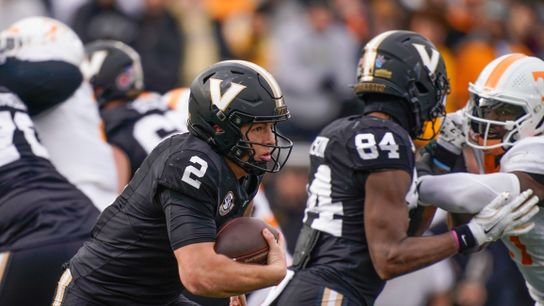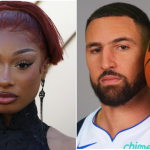The most important college football clash taking place this fall may have just occurred in a courtroom on Tuesday.
The US Court of Appeals for the Sixth Circuit on Tuesday heard arguments between the NCAA and the lawyers for Diego Pavia, related to the court granting the Vanderbilt quarterback an injunction to play a sixth season of college football, on account of his two years at New Mexico Military Institute not counting toward his NCAA eligibility, since NMMI is not an NCAA institution.
But during the hearing, Pavia’s attorneys went full Eduardo Saverin. Their client doesn’t just want a sixth season, which is ongoing and going quite well. They also want a seventh.
Wow, Pavia’s attorney is saying that unless the rules are not found to be subject to antitrust they’re going to stack on a challenge to the redshirt rule and asking for an injunction so Pavia can play in 2026.
Had a feeling that would be the case given some of the briefing.
— Sam C. Ehrlich (@samcehrlich) September 16, 2025
After two seasons at NMMI, Pavia played two at New Mexico State and is in his second at Vanderbilt. But Pavia’s lawyers indicated they will join the growing chorus of voices that the 4-to-play-5 rule should become 5-to-play-5.
To be sure, this argument is not new. Personally, I first encountered the 5-to-play-5 argument in a column written by Terry Bowden in the Sporting News (that was a magazine, kids) (a magazine was a… forget it). But that argument has taken on additional urgency of late, for obvious reasons.
The legal theory is simple: being a college football player is now a job, no different than playing in the NFL or working for Office Depot. Through NIL rules, athletes market their services to schools, who compete with each other for wins and for dollars. The House settlement strengthened this case, given that athletes now receive a 22 percent cut of the average revenue across FBS. And since “college football player” is now an occupation no different from any other, the NCAA has no legal right to limit how long an individual can perform this job, no different than the courts can limit how long an individual can play in the NFL or work the front desk for Office Depot.
“To the extent the NCAA ever had a valid argument that its eligibility rules were not commercial because they only indirectly determined who could receive NIL compensation, and Mr. Pavia maintains they did not, that argument no longer exists after House; now, NCAA eligibility rules directly determine who receives revenue-sharing compensation from NCAA member schools,” Pavia’s brief reads, per Sportico.
The NCAA’s argument is that the temporary nature of college sports is what makes the enterprise college sports, and that moving older players out is necessary to create opportunities for younger players.
However, the 5-to-play-5 argument does not go to its obvious conclusion. The 4-year eligibility rule was created to tie athletic eligibility to the traditional academic progress toward a degree. A redshirt year was created to give players time to acclimate to the jump between high school and college athletics.
But if athletic eligibility is no longer going to be directly linked to education, and is “college football player” is a job no different than professional athlete, teacher or plumber, why stop at five? If you can do the job for five years, you should be able to do it for six, eight, or 12 years.
A ruling on Tuesday’s hearing is not expected for months. But if and when Pavia wins it and returns for the 2026 season, expect his lawyers to argue for unlimited eligibility this time next year.
Update> Despite having attorneys seeking the additional time on his behalf, Pavia tweets this afternoon that he currently plans for this to be his final season.











